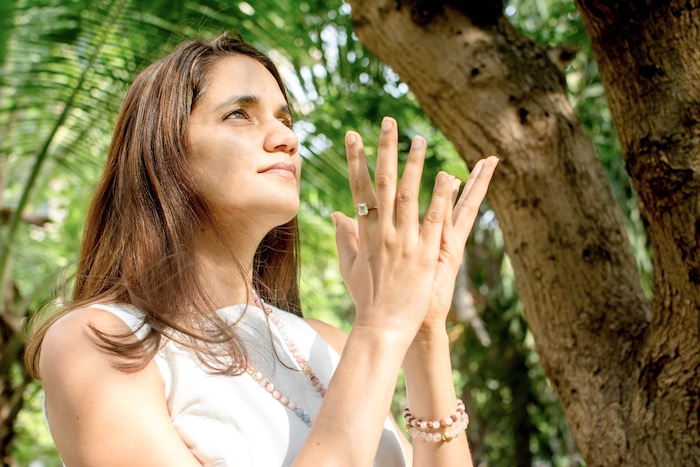Breathing exercises are a very effective way to keep the lungs healthy and improve our breathing capacity. While regularly doing deep breathing is great for our overall physical and mental health, it has become especially important during the times of Covid-19.
Various anecdotal stories have been shared from Wuhan to England where people have shared their experience of improvement in Covid-19 symptoms by doing specific breathing exercises. The novel coronavirus primarily attacks the lungs and our respiratory system resulting in breathing problems and in severe cases pneumonia. Keeping our lungs strong and healthy is a good way to prepare ourselves for the pandemic and to find more confidence in our body’s ability to heal.
How do lungs work?
Every cell in our body needs oxygen to function optimally. This oxygen is provided by the air we take in when we breathe and the oxygen exchange happens in our lungs. Our lung capacity is 6 liters though we only breathe in about half a liter of air in every breath. When breathing mindfully we can take this up to 3 liters.
This breathing capacity starts declining with age 35 onwards. It happens for multiple reasons including losing bone density which makes the rib cage smaller, limiting lung expansion. Even our diaphragm (the muscle that helps us breathe) gets weaker with age reducing how much air we can take in when we inhale. That is another reason why breathing or recovery from respiratory infections gets difficult as we age.
How to keep lungs healthy?
We can minimize damage to our lungs and keep them in optimum working condition by staying active and doing breathing exercises. Regular aerobic activity keeps them functioning efficiently. Strength training helps improve our posture and trains the muscles that help us breathe correctly. And breathing exercises help remove stale air from the lungs and increase our breathing capacity. The good part about breathing exercises is that anyone can do them, anywhere, they are the most accessible and simplest of ways to work on strengthening our lungs.
There are three breathing exercises in particular that are simple, highly effective, and can be done by anyone. Here’s a quick video that explains these 3 exercises in detail.
Continue reading to learn more about these Breathing Exercises:
#1. Pursed Lip Breathing Exercise

- Sit in a comfortable position with your spine upright
- Take a deep breath in through the nose, keeping your mouth closed
- Exhale slowly through the mouth keeping your lips pursed
- Make the exhalation slow and draw out the breath gradually
- Repeat for 3 to 5 mins
It’s a simple technique that helps improve overall lung capacity and slows down our breathing. If we take fewer breaths per minute then our body gets more time to absorb oxygen which allows us to be more active.
#2. Belly Breathing Exercise or Diaphragmatic Breathing

- Lie down on a flat surface with your knees bent
- Keep one hand on the belly and another on the chest
- Breathe deeply into the belly so that the hand on the belly rises more than the chest
- Exhale slowly allowing the belly to settle back
- Repeat for 3 to 5 mins
This allows us to breathe more deeply by pulling air into the lowest lobes of the lungs. This habit eventually results in increased breathing capacity which means more air is able to flow in and out of the lungs. It also allows us to remove stale air from the lungs which frees up space and allows more fresh air to come in.
#3. Makarasana Breathing Exercise

- Lie down on your belly in a prone position
- Stack one palm on top of the other and rest your forehead on it
- Point your toes straight back and relax your body
- Draw your breath into the back of the lungs around your mid & upper back
- Exhale and relax your body
- Repeat for 3 to 5 mins
This is yet another very effective technique to increase our overall breathing capacity by activating a very large surface area of our lungs at the back. The more we learn to engage different parts of the lungs, the greater our breathing capacity, and the more oxygen we can absorb with every breath.
How much time should you spend doing these breathing exercises?
All of the above exercises can be done anytime as long as you’re relaxed and on an empty stomach. Just make sure you don’t practice them in crowded spaces but do so in the privacy of your room or in well-ventilated areas to avoid picking up pathogens or infections while doing deep breathing.
Important: Lastly, please remember that these exercises are not a cure for Coronavirus infections. Doing breathing practices does not mean that we will never get COVID 19. However, regularly exercising our lungs can certainly reduce our risk and improve our ability to fight an infection successfully.
Conclusion
Breathing exercises are a great way to strengthen the diaphragm and to train the body to engage the lungs to breathe more deeply and efficiently. When practiced regularly they help make the lungs more elastic and active by removing stale air that would’ve accumulated in different corners of the lungs due to inefficient breathing. All of this improves our energy levels and makes us more active as each cell in the body gets the oxygen it needs to function. More importantly, the healthier and more efficient our lungs, the better their ability to fight infections.







